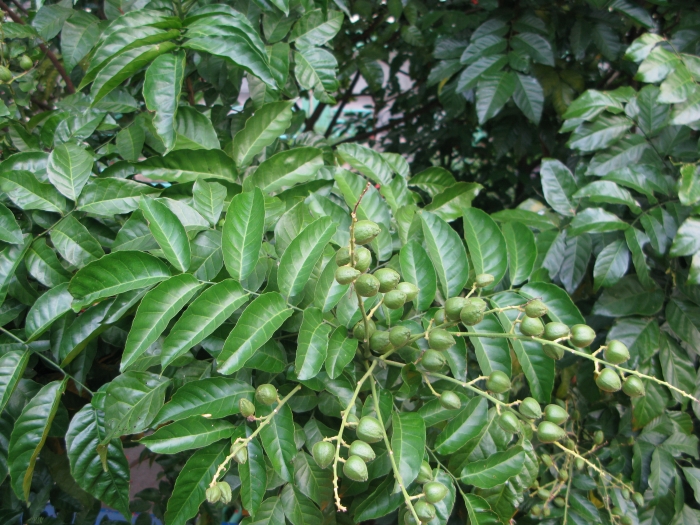Wampi
(Clausena lansium)
Wampi (Clausena lansium)
/
/

Earth100
CC BY 3.0
Image By:
Earth100
Recorded By:
Copyright:
CC BY 3.0
Copyright Notice:
Photo by: Earth100 | License Type: CC BY 3.0 | License URL: https://creativecommons.org/licenses/by/3.0 | Uploader: Earth100 | Publisher: Wikimedia Commons | Title: Clausena_lansium_unripe_fruits.JPG |












Estimated Native Range
Summary
Clausena lansium, commonly known as Wampi, is an evergreen tree native to the forest margins and open woodlands of South Central and Southeast China, Laos, and Vietnam. It typically grows to a height of 3–8 meters with a dense, rounded canopy. The leaves of Wampi are smooth, glossy, and dark green, contributing to its ornamental value. From late March, the tree produces clusters of small, white, fragrant flowers with four or five petals, each about 3–4 mm in diameter. Following the flowering season, it bears oval fruits that are about 3 cm long and 2 cm in diameter. These fruits have a thin skin and contain two to five large seeds, which occupy approximately 40-50% of the fruit volume. The fruit is similar in size to grapes, with a citrusy fragrance and a taste that allows for the consumption of both skin and seeds, akin to kumquats.
Wampi is valued for its aromatic fruit, which is enjoyed fresh and is also used in culinary preparations. The tree is well-suited for tropical and subtropical gardens, and it can be used as an ornamental plant or for fruit production. It is adaptable to a range of soil types but thrives in rich loam. Wampi requires full sun exposure and medium water availability with well-draining soil to flourish. While it is generally easy to maintain, it is sensitive to cold temperatures, which can limit its cultivation to warmer regions. Gardeners should be aware that Wampi has no major disease issues, but it can suffer from root rot in poorly drained soils.CC BY-SA 4.0
Wampi is valued for its aromatic fruit, which is enjoyed fresh and is also used in culinary preparations. The tree is well-suited for tropical and subtropical gardens, and it can be used as an ornamental plant or for fruit production. It is adaptable to a range of soil types but thrives in rich loam. Wampi requires full sun exposure and medium water availability with well-draining soil to flourish. While it is generally easy to maintain, it is sensitive to cold temperatures, which can limit its cultivation to warmer regions. Gardeners should be aware that Wampi has no major disease issues, but it can suffer from root rot in poorly drained soils.CC BY-SA 4.0
Plant Description
- Plant Type: Tree
- Height: 9-24 feet
- Width: 7-20 feet
- Growth Rate: Moderate
- Flower Color: White
- Flowering Season: Spring
- Leaf Retention: Evergreen
Growth Requirements
- Sun: Full Sun
- Water: Medium
- Drainage: Medium
Common Uses
Bird Garden, Butterfly Garden, Edible*Disclaimer: Easyscape's listed plant edibility is for informational use. Always verify the safety and proper identification of any plant before consumption., Fragrant, Low Maintenance
Natural Habitat
Forest margins and open woodlands
Other Names
Common Names: Chinese Clausena, Wampee, Huang Pi
Scientific Names: , Clausena lansium, Clausena wampi, Cookia punctata, Aulacia punctata, Clausena punctata, Cookia wampi, Quinaria lansium, Sonneratia punctata,
GBIF Accepted Name: Clausena lansium (Lour.) Skeels